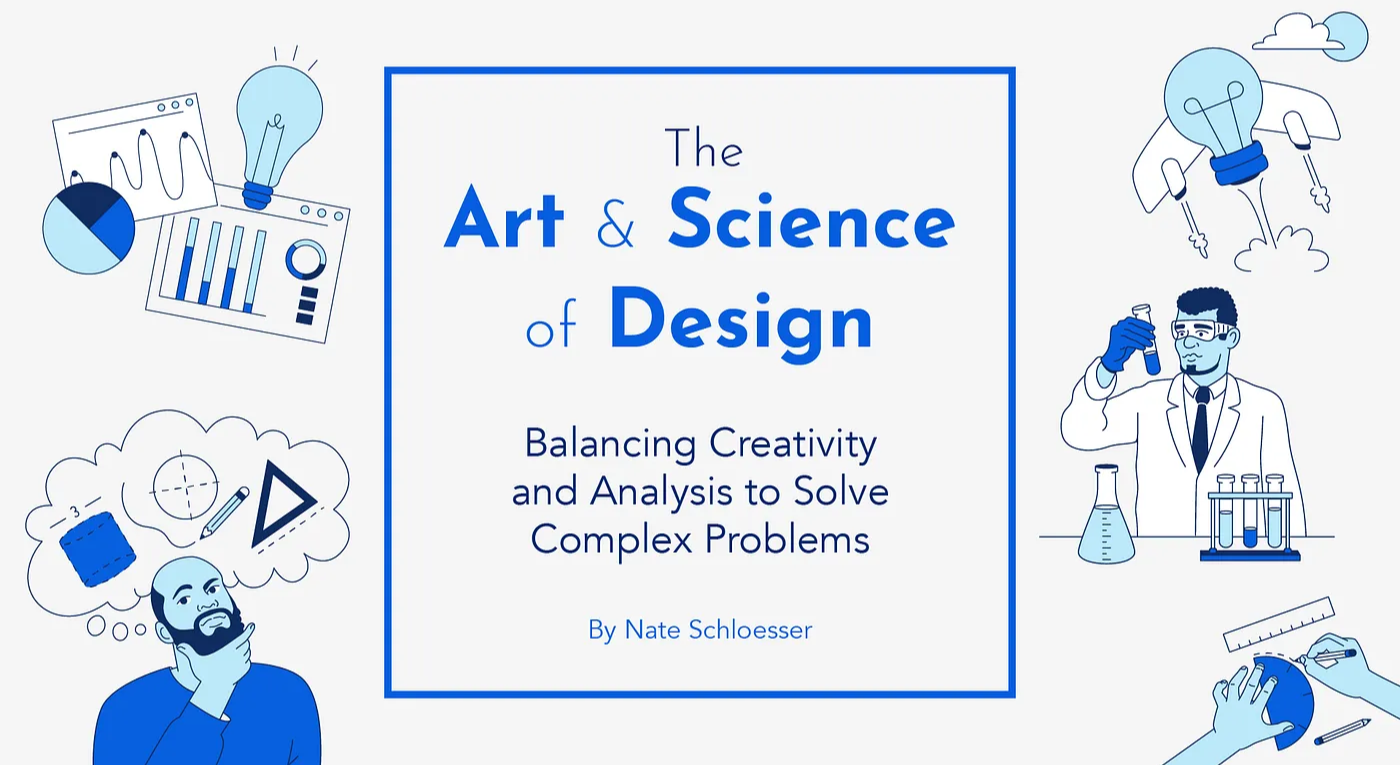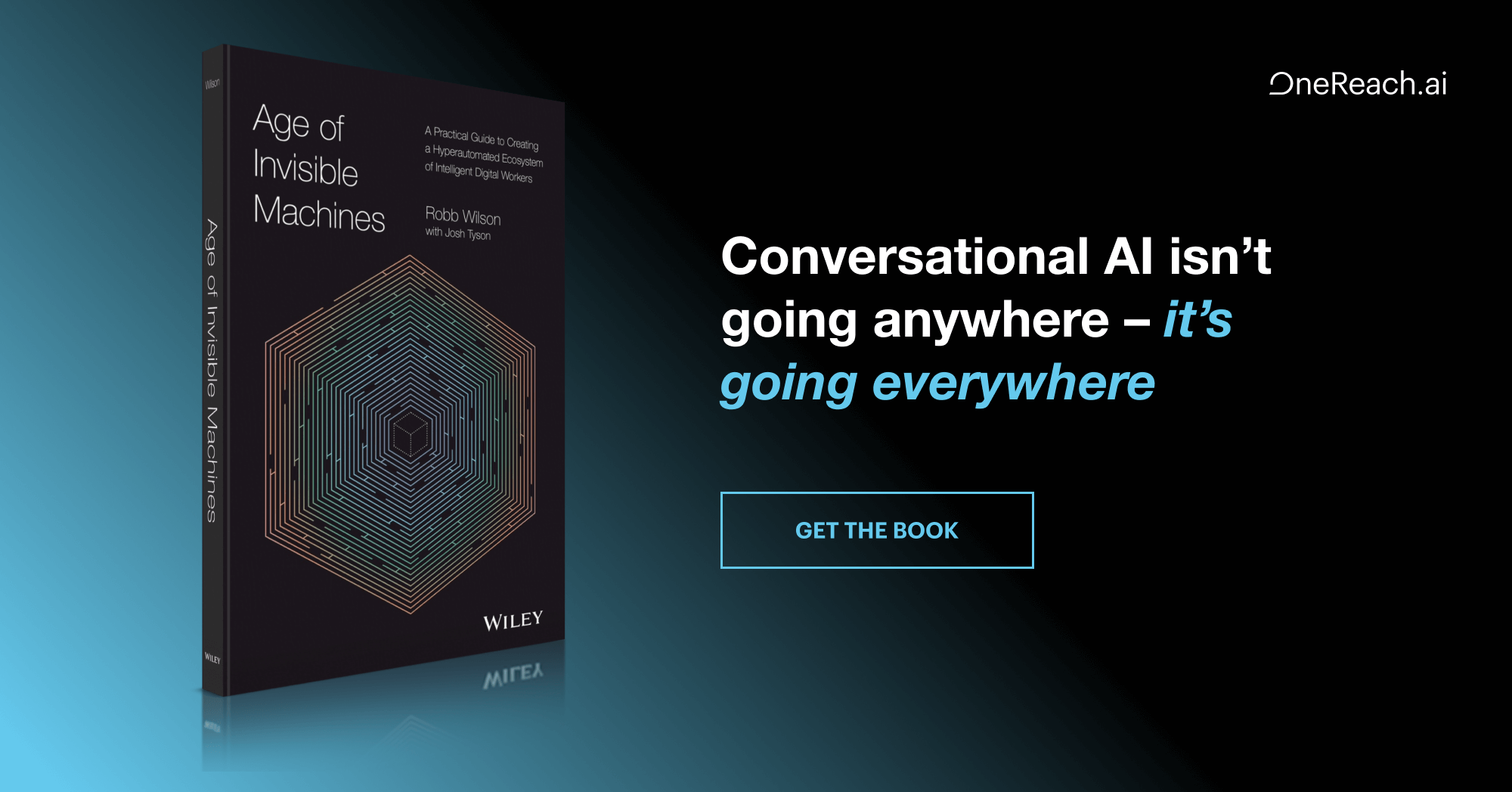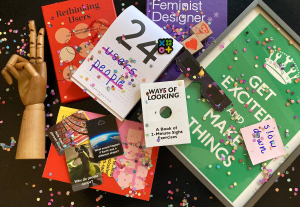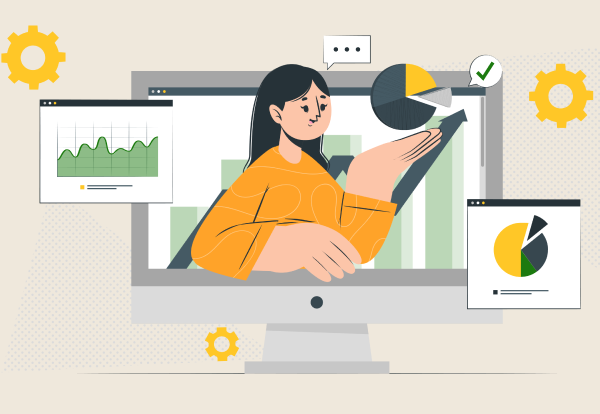In 2003, a small startup called Tesla set out to disrupt the automotive industry with a bold vision: to create electric cars that would revolutionize transportation and help reduce the world’s dependence on fossil fuels. Over the next decade, Tesla would develop a reputation not just for its cutting-edge technology and sleek design, but for its innovative approach to problem-solving and design thinking.
At the heart of Tesla’s success is its use of design as a means of turning problems into possibilities. From creating a network of charging stations where customers can charge for free, to developing advanced AI and self-driving capabilities, Tesla has consistently pushed the boundaries of what is possible in the auto industry. But what is it about Tesla’s design approach that has made it so successful?
One answer lies in the way that Tesla balances subjective and objective elements in its design process. This theme of subjective versus objective elements in design is a fundamental concept in the field of design, and one that has been integral to Tesla’s success. By using both subjective and objective elements in its design approach, Tesla has been able to create cars that are not only visually stunning, but also functionally effective and innovative.
So what is design, exactly? Design is the art of turning problems into possibilities. It is a process that is inherently geared towards solving problems, and it is a human-centered approach to innovation that draws from the designer’s toolkit to integrate the needs of people, the possibilities of technology, and the requirements for business success.
In this article, we will explore the theme of subjective versus objective elements in design. We will discuss the problem-solving nature of design, the importance of creativity in design, the role of constraints in design, the iterative nature of design, the impact of design on society, and examples of design turning problems into possibilities. Throughout these discussions, we will highlight how a design approach that integrates subjective and objective elements has enabled companies across various industries to create some of the most innovative and exciting products and services available today.
Design is the art of turning problems into possibilities.
The Problem-Solving Nature of Design
Design is a process that is inherently geared towards solving problems. To turn problems into possibilities, designers use a combination of subjective and objective elements in their approach.
Subjective elements include the personal experiences, perspectives, and opinions that a designer brings to the problem-solving process. Objective elements, on the other hand, refer to facts, data, and research that help provide an evidence-based understanding of the problem.
Using a combination of subjective and objective elements, designers can gain a comprehensive understanding of the problem they are trying to solve. This enables them to develop new and innovative ideas, while also ensuring that the solutions are practical and effective.
Design has been used to address complex challenges in a variety of fields, including sustainability and healthcare. Some examples include:
Design in Sustainability:
- Use of eco-friendly materials and energy-efficient technology in product design
- Development of sustainable packaging and transportation systems
- Creation of sustainable building and urban design solutions
Design in Healthcare:
- Design of medical devices that are easier to use and improve patient outcomes
- Creation of healthcare environments that are more comfortable and less stressful for patients and families
- Development of digital health solutions that improve access to care and patient outcomes
“Design is the intermediary between information and understanding.” — Richard Grefé, former CEO of the American Institute of Graphic Arts
Design is a human-centered approach to innovation that draws from the designer’s toolkit to integrate the needs of people, the possibilities of technology, and the requirements for business success. By using a combination of subjective and objective elements in their approach, designers can turn problems into possibilities by identifying and addressing the underlying needs of people and communities, and developing solutions that are both creative and effective.
The Importance of Creativity in Design
Design is a creative process that relies on the ability to generate new and innovative ideas. While design requires a combination of subjective and objective elements, creativity is an essential subjective element that enables designers to think outside the box and come up with truly innovative solutions.
Key components of creativity in design include:
- Intuition: the ability to draw on personal experiences and knowledge to develop ideas and solutions
- Imagination: the ability to think beyond what already exists and come up with truly innovative concepts
- Aesthetic sensibility: the ability to understand and appreciate the importance of visual and tactile design elements in creating a compelling product or experience
Creative thinking in design requires breaking out of established patterns and looking at things in a different way. This ability to challenge assumptions and find new solutions is what enables designers to make a real impact in their field.
To ensure that creative ideas are practical and effective, it’s important to balance creativity with objective analysis and testing. This requires using data and testing to verify that ideas are viable and can be implemented in a real-world setting.
Studies have shown that incorporating creative thinking into the design process can lead to better outcomes. For example:
- A study by the Design Management Institute found that design-driven companies outperformed their peers in terms of revenue growth, shareholder returns, and other key financial metrics.
- A survey by Adobe found that companies that prioritize creativity are more likely to be innovative, have happier employees, and be more competitive.
Incorporating creativity into the design process is essential for developing new and innovative solutions to complex problems. By challenging assumptions and thinking outside the box, designers can create products, services, and experiences that truly stand out and make a real impact.
The Role of Constraints in Design
Constraints are a reality of the design process, whether they be time, budget, or resources. While constraints can be limiting, they can also be liberating, forcing designers to think more creatively and develop unique solutions.
Using a combination of subjective and objective elements, designers can navigate constraints and develop effective solutions. For example, a designer may use intuition and imagination to generate ideas, while using data and research to ensure that those ideas are viable and can be implemented in a real-world setting.
Designers have a long history of using constraints to create innovative and effective designs. Some examples include:
- Jugaad Innovation: A term used to describe the practice of frugal innovation in emerging markets, where designers use constraints such as limited resources and infrastructure to develop innovative solutions.
- Cradle-to-Cradle Design: A design approach that seeks to create products and systems that are sustainable by design, using constraints such as environmental impact and resource depletion as a driver for innovation.
- Zero-Based Design: A design approach that requires designers to start from scratch and create something entirely new, often in response to constraints such as changing market conditions or customer needs.
As noted by designer Charles Eames, “Design depends largely on constraints.” The ability to navigate constraints is what enables designers to develop solutions that are both creative and effective.
Studies have shown that using constraints to drive innovation can lead to better outcomes. For example, a study by the Harvard Business Review found that companies that use constraints as a driver for innovation are more likely to be successful in developing new products and services.
In sum, constraints are an essential part of the design process. While they can be limiting, they can also be liberating, forcing designers to think more creatively and develop unique solutions. By using a combination of subjective and objective elements, designers can navigate constraints and develop effective solutions that meet the needs of their clients and users.
The Iterative Nature of Design
Design is an iterative process that involves both subjective creativity and objective testing and analysis. In order to create a successful design, designers must be willing to take risks and experiment with new ideas, while also being open to feedback and using data analysis to refine and improve their designs.
“Design is really an iterative process. You come up with an idea, you prototype it, you show it to somebody, you get feedback, you go back and re-prototype and then you test it again. You do that over and over and over again until you get to the best solution possible.” — Design Thinking Co-Founder David Kelley
The Role of Creativity and Objective Analysis
- To achieve a successful design, designers must be willing to try new things and take risks. They must not be afraid to fail, and they must be open to feedback and able to adapt their ideas based on that feedback.
- Designers must use objective analysis and testing to ensure practical and effective solutions.
- Creativity and objective analysis are not mutually exclusive but rather work together in the iterative design process to create the most effective and innovative solutions. Designers must use their creativity to generate new ideas and approaches, while also using objective analysis and testing to ensure that those ideas are practical and effective.
Examples of Iterative Design
- Apple used an iterative approach to design the first iPhone. According to former Apple executive Tony Fadell, the iPhone went through 30 to 40 different iterations before the final product was released.
- Amazon used a “build, measure, learn” approach to design the Kindle, which involved creating multiple prototypes and using customer feedback to refine the design.
- The popular design tool Sketch was developed using an iterative design approach. The founders of Sketch developed the tool in response to frustrations they had with existing design tools. They began by creating a simple, lightweight design tool that met their own needs, and then iteratively added features and functionality based on feedback from users. Through this process, Sketch became a popular tool for designers and has since been adopted by many companies and design teams around the world.
Overall, the iterative nature of design is a crucial element of the design process. By being willing to take risks, experiment with new ideas, and adapt based on feedback, designers can create successful products, services, and experiences that meet the needs of their customers and have a positive impact on society.
The Impact of Design on Society
Design is the art of turning problems into possibilities. The impact of design on society can be both subjective and objective. Design can improve people’s lives, enhance functionality, and create a better future. In this section, we will discuss how designers can create products, services, and experiences that are both aesthetically pleasing and functionally effective, and how design has made a positive impact on society in areas such as accessibility, sustainability, and social justice.
Design for Accessibility
- Design can improve the lives of people with disabilities by creating products and experiences that are accessible to all.
- The Americans with Disabilities Act (ADA) is an example of how design can create a more accessible world. The ADA requires public spaces to be accessible to people with disabilities, including features such as wheelchair ramps, Braille signage, and closed captioning.
Design for Sustainability
- Design can create a more sustainable future by reducing waste and pollution, conserving resources, and promoting renewable energy.
- The Dutch company Fairphone designs smartphones that are ethically and environmentally responsible, using recycled and conflict-free materials, and by creating a modular design that allows for easy repairs and upgrades.
Design for Social Justice
- Design can promote social justice by creating products and experiences that are inclusive and address systemic inequalities.
- The design team at Airbnb developed a new feature that allows hosts to donate a portion of their proceeds to nonprofit organizations that support refugees and immigrants. This feature helps address the issue of housing inequality for refugees and immigrants, while also promoting social justice.
The Power of Design to Transform Society
- Design has the power to transform society by solving problems and creating possibilities.
- According to the Design Management Institute, companies that invest in design outperform their competitors by over 200%.
- By using a design approach that balances subjective and objective elements, designers can create products, services, and experiences that improve people’s lives, promote sustainability, and promote social justice.
Examples of Design Turning Problems into Possibilities
Designers use both creative problem-solving and data analysis to develop effective solutions that address complex challenges. In this section, we will feature examples of design turning problems into possibilities that demonstrate the integration of subjective and objective elements.
Transportation
- Zipcar, a car-sharing service, turned the problem of car ownership into a possibility for city dwellers who don’t need a car every day.
- Zipcar provides affordable and convenient access to cars, without the burden of car ownership, and promotes sustainability by reducing the number of cars on the road.
Healthcare
- The wearable medical device ECG Patch turns the problem of hospitalization into a possibility for patients with heart problems.
- The device allows patients to monitor their heart health from the comfort of their own home, and helps doctors detect and treat heart problems earlier, resulting in better health outcomes.
Education
- The Khan Academy is an example of how design can turn the problem of limited access to education into a possibility for people around the world.
- The online learning platform provides free educational resources on a wide range of topics, making education accessible to anyone with an internet connection.
Design in Action
- According to a study by McKinsey, companies that use design thinking outperform their peers by 32% in revenue and 56% in total returns to shareholders.
- The success of companies like Zipcar, ECG Patch, and Khan Academy demonstrate the power of design to turn problems into possibilities, and the potential of design thinking to drive business success.
Through these examples, we can see how design has been used to address complex challenges in areas such as transportation, healthcare, and education. By integrating subjective and objective elements in their design approach, designers can create innovative and effective solutions that have the potential to transform society.
The Future of Design
Design is the art of turning problems into possibilities. As the world continues to evolve, so too does the field of design. In this section, we will discuss the future of design, and how designers must continue to integrate subjective and objective elements in their work to stay relevant and effective.
The Impact of Emerging Technologies
- Emerging technologies, such as artificial intelligence and virtual reality, are changing the design landscape and requiring designers to be more versatile and adaptive in their skills.
- These technologies offer new possibilities for designers to create more personalized, interactive, and immersive experiences.
The Importance of Versatility
- To be successful in the future, designers must be versatile and able to work across a range of platforms and media.
- According to a study by Adobe, 73% of hiring managers say that versatility is one of the most important skills for designers to have.
The Potential of Design
- Design has the potential to continue to be a powerful tool for innovation and problem-solving in an ever-changing world.
- The design approach, which integrates subjective and objective elements, can be applied to a wide range of challenges, from addressing climate change to improving healthcare outcomes.
Design in Business
- According to the Design Management Institute, design-led companies outperformed the S&P 500 by 219% over the past ten years.
- This demonstrates the potential of design to not only solve problems and create innovative solutions, but also to drive business success.
Designers must continue to push the boundaries of what is possible, while staying true to the problem-solving nature of design. By integrating subjective and objective elements in their work, designers can create innovative solutions that have the potential to transform society. The future of design is bright, and we can expect to see continued growth and innovation in this exciting field.
Final Thoughts
Design is the art of turning problems into possibilities. By using both subjective and objective elements, designers can analyze and understand the root causes of a problem, develop new ideas and approaches to problems, and ultimately create effective and innovative solutions. In this article, we explored the theme of subjective versus objective elements in design, and how it has been integral to some of the most successful design stories. We have discussed the problem-solving nature of design, the importance of creativity, the role of constraints, the iterative nature of design, the impact of design on society, examples of design turning problems into possibilities, and the future of design.
Throughout this exploration, we have seen that design is a multifaceted process that balances creativity and objective analysis. It has the power to make a significant impact on society by addressing complex challenges and improving people’s lives. As we move forward, it is important for designers to continue to integrate subjective and objective elements to remain relevant and effective. With emerging technologies such as artificial intelligence and virtual reality, designers must be more versatile and adaptive in their skills. Design has the potential to be a powerful tool for innovation and problem-solving in an ever-changing world.








